Does not exist in the light of ugly colors. Some of them attract us with their tenderness and simplicity, others - charm and sophistication. Now it will be about the nutics. These, at first glance, simple and conventional flowers are very widely popular and require some attention to themselves.
General characteristics of gardener
- Ranunculyus, or the buttercup of the garden is a plant that rapidly conquers sympathy of both experienced gardeners and beginners.
- Stun the imagination beauty of forms and an infinite variety of shades.
- Lituity Garden was grown thanks to the work of breeders who did so that this plant is already not much like his wild relative. Varieties and hybrids of this flower set. Flowers of this plant will decorate any garden plot, floweruba or courtyard. Unpretentious, a bright plant always attracts attention to himself.
- Garden buttercup is a low, bush perennial plant. Its height is an average of about 55 cm. This is a weaker perennial, with a reprehensive stem, a tuber-like system and flowers with a diameter of 5 - 10 cm, which may be simple, terry or denominations.
- The color scheme is very diverse, up to two - and even three-color varieties. Photo of garden butterms displays all infinity of shades and tones of this plant. No among the buttercups of only blue and blue colors.
- Cut wounds can save freshness up to 7 to 10 days. The cut must be made clean, oblique at an angle of 45 degrees. Cut flowers do not like direct sunlight and drafts.
- It should be known that the buttercups have a lot and annual. By purchasing this plant, you should be sure to take into account. But it happens that some gardeners do not want to dig up the root of these colors in the fall, and just in the spring they buy new roots or seeds.
- However, experienced gardeners even recommend changing the roots every 3 to 4 years, purchasing new in special stores. This is due to the fact that over time the plants are exposed to viruses defeats, and may also lose their decorativeness.
- It is also possible to improve plants with the help of growing them from seeds.
- However, it should be noted that, despite the unpretentiousness and impressive effectiveness of this perennial, it is poisonous. Therefore, it is recommended to grow it away from children and domestic animals. Usually it is planted in closed flower beds.
Types of Lutikov
- One of the types of Lutikov family is the richly garden. The scientific name of this plant sounds like Ranunculus (Ranunculus), which comes from the Latin word "frog". It is determined by the fact that most of the types of iltikov, especially wildly, are very like moisture and grow well on the wet soil.
- All buttercups can be divided into several subspecies. These are Asian, they include Persian, French and pionic, and African or them are also called Chalmidoid.
- From the very name of pionic butterfly, it can be seen that the flowers are similar to small peonies. Flowers are large enough, 7 - 10 cm in diameter, terry, color gamut is very wide.
- French buttercups have semi-world flowers, and Persian are characterized by a very short stem and simple or semi-marginal flowers.
- African buttercups - thick and spherical, compared to the rest are very large.
Locclee Garden: landing and care, feeding
- Ranunculus is a rather unpretentious plant. His growing will not give you any trouble, the butcher does not require much care. Even novice gardeners can cope with this task. Under the departure, we mean the bursting of the soil, the organization of the right rational watering of plants, fertilizer, weeding, the removal of those sockets, which has already been blowing, fighting diseases and all sorts of pests, if required.
- Soil moisturizing should be carried out regularly, but without making overflow. This can lead to a planting of the plant, and subsequently, even to his death. If it still happened so that you were overpowered with water, then the plant should immediately dig up, rinse the root system, to disinfect the solution of manganese and give it to dry 2 - 3 hours. After that, fall into the ground.
- Buttercups are afraid of the cutting of the soil just like overflow. The roots dry and die. In terms of irrigation, buttercups are quite capricious.
- It should also be noted that these unpretentious plants grow pretty quickly. This can not be allowed. Shoot the rhizomes, separate the "kids" from them and transplant to another place. Thus, it can be noted that these colors multiply very quickly. For one season, young plants produce up to three "children", and adults - to seven.
- This is a very thermal-loving plant. The landing of the garden is produced in the spring when the soil warms up by 6 - 8 cm. Presumably it can be the middle or end of April or even the beginning of May. If there is still a danger of the occurrence of the tarnings, then the planted plants are necessarily covered with straw or other insulation materials.
- The place for their landing of this plant needs to choose enough solar, but protected from direct sunlight. It should be borne in mind that the buttercups that are planted on a very sunny section of your yard will be very shortly blossoming. Therefore, the perfect place to land the gardener can be flowerbed, which is under some kind of tree with a not very thick crown. Also, the butchers are also not approved. Thus, it should be a quiet place with scattered sunlight.
- Planting next to the butterms any other decorative plants are not worth it. Despite all its attractiveness and abundance of colors, these plants are simply lost among others in connection with their low growth. Ranuncours are usually planted by groups of several plants or even quite numerous arrays.
- The soil on which plants landing is planned, must necessarily be loose and soft. These plants in Suglinka or soup soil are bad. Heavy soils stirred with peat or sand. It is important that the Earth during watering well absorbed moisture and very long detained it. Experienced gardeners prepare the land for planting plants preferably in the fall, so that for the winter she slept well and was mixed with fertilizers made.
- The swollen tubers of the plants or germs that have grown from seeds are planted in a hole to a depth of about 5 cm. In each well, it is necessary to put drainage to prevent the planting of the plant. One root sits in one hole. The strawberry of the garden is similar to the octopus. So you need to plant them with legs down, otherwise they may simply do not exist. After planting the soil, it is recommended slightly moistened, but do not overpay, in order to prevent the roots of the roots.
- Walk out the clubs in a half - two weeks. The flowers will also delight you in 2-3 months after disembarking. The number of flowers that form a plant directly depends on the size of the tuber: the largest tube, the greater the flowers will be.
- During the period of active growth and formation, the bustle needs to produce nitrogen plants, and during the flowering period - to make potash-phosphoric feeding. The feeders contribute to the flowering of the gardener's butterfly, and the development is good. Of course, if the soil you have a nutritious and fat, then the feeding is not necessary.
- In the open soil, the rununcouleus non-winter. Even with reliable shelter during the cold season, they die.
- At the beginning of autumn, when the flowering of the butterfly is stopped, and the leaves are yellowing, watering the plants gradually stop. The tubers of the leaf of garden digging, dry and purify from the soil. It should be noted that all work needs to be carried out very carefully, because the root of these colors is very fragile.
- Putting the tubers are placed in plastic bags with peat or sand and put up to spring in a cool place. Throughout the winter, the rhizomes are visible several times. This is done with the purpose of the early detection of any diseases of the roots.
- If you discovered any disease, rot or mold, the affected places should be treated with colloidal gray or green. If the destruction site is very large, it is immediately removed. If you keep track of the roots in this way, they are able to preserve their viability for more than a year.
Reproduction of Lutikov
There are two main ways of reproduction of gardeners:
- seeds;
- root division.
Reproduction of seeds
- Collect seeds from this plant at home is quite problematic. Therefore, it is recommended to purchase them in specialized stores.
- If you still decided to collect seeds yourself, then it is recommended to do it from the first dried flowers. So more likely that next year the buttercups will not lose its decorativeness.
- Sadico seeds should be heated in special containers at the end of February. The soil should be light and loose.
- From above, the sinky seeds are poured with a small amount of soil, which then should be well moistened from the sprayer. Capacities are covered with glass or film. Creates a kind of guy.
- Periodically, the glass is discovered, the condensate is removed, they ventilate and moisturized the ground. Buttercourse is grown at a temperature of 10 - 14 C in a shaded place.
- Usually after 2 - 3 weeks, the first searches appear.
- After that, the container is rearranged onto a light window sill, but there should be no direct sunlight.
- After the appearance of 4 present leaves, the plants are picked in individual pots.
reproduction of rhizomes
- The reproduction of rhizomes is somewhat simpler. As already mentioned, the strawberry of the butter is like octopus. If you are a novice gardener and you do not have tubers overwhelmed since last year, it should also acquire them in special stores.
- The roots of this plant are packaged by a special way and are usually a bit dry. The main thing is that they are not overwhelmed, so as not to break. Otherwise, this plant will no longer go out.
- Before landing, they are recommended to moisten them. First, it is required to make a dark solution of manganese and disinfection of the roots in this solution 20 - 30 minutes.
- Then they are wrapped in wet fabric and leave at room temperature for 3 hours.
- After that, it is placed in a plastic bag and put into a fridge or any other cool place.
- A day later, the root of the gardener will scatter almost twice and will be ready for disembarking them into the ground.
Diseases and pests
- It should be noted that this type of ults is sufficiently resistant to different diseases and pests. The only and main threat to the buttercasters is the overalling of the soil.
- The convergence contributes to the appearance of root rot and threatens the plant to death. Therefore, experienced gardeners are recommended when disembarking the buttercasters in each well to lay drainage.
- If the summer was too rainy, the garden buttercups may suffer and malievable dews, from butterflies-cabbageders who eat leaves. It is recommended to deal with these pests that can be bio-insecticidal preparations that can be bought in any specialized store.
- Leaves and leather flowers can be covered with white mold, and petals - brown spots. This happens as a result of a plant infection with mushrooms.
- Nematodes are of great danger, they damage the roots of the plant. To prevent pest attacks, various insecticidal agents are used.
Garden buttercups in a flower pot
- A small root system and a compact bush make it possible to feel the rutika garden to feel great in a flower pot right in the house.
- Buttercups are quite compact plants, so they do not need a big pot. 15 cm in diameter will be quite enough. Mandatory drainage.
- If the plant is enough light and nutrients, then even in winter it can delight you with bright and long blossoms.
- Some gardeners, digs in the fall on their site of the root of the buttermits, transplanted them into pots and keep indoors. One root is placed in one pot.
- No special cultivation of the butter in the house from their cultivation on the street is no different. The only thing, limit the access of children and pets.
- The soil should be loose, it is best if it is a mixture of flower earth and sand in equal parts.
- Buttercups feel great on the south side of the house where the lighting is brighter. But from direct sunlights, they are still worth shading.
- In winter, if the flower is artificially freshen, it will not bloom. In addition, this flower also requires some rest period. It is much less than it is necessary for other colors and is only 1 - 1.5 months.

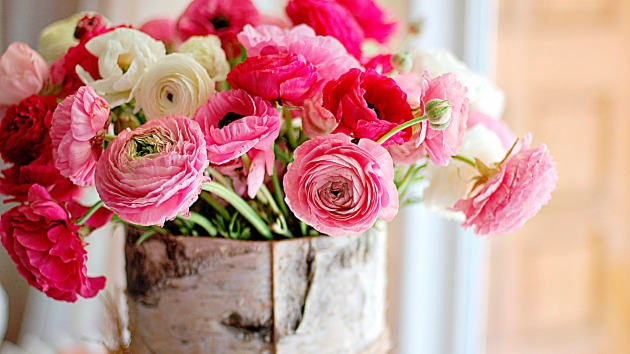
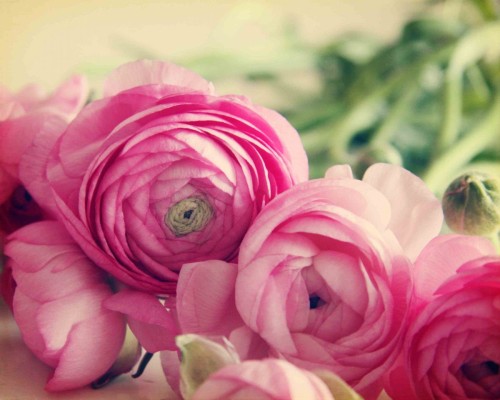
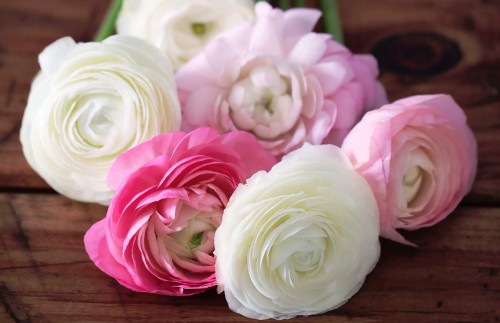
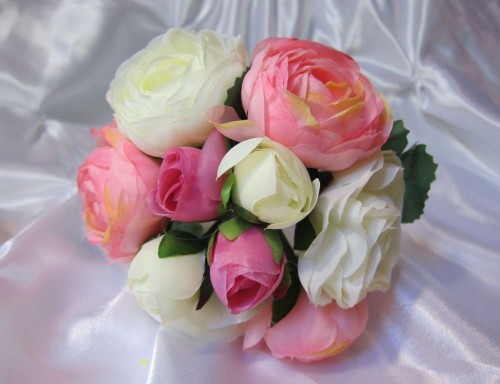

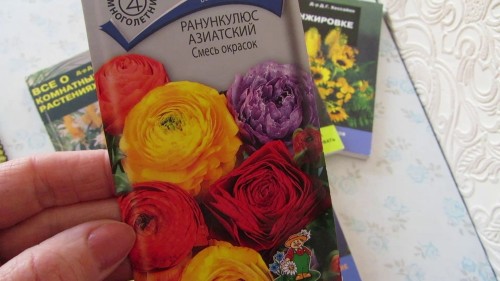
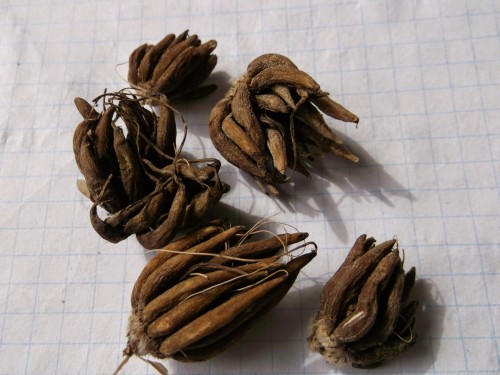
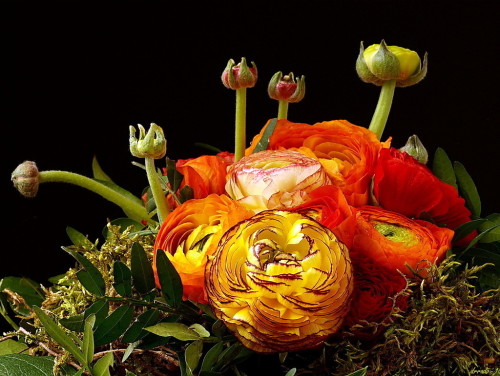
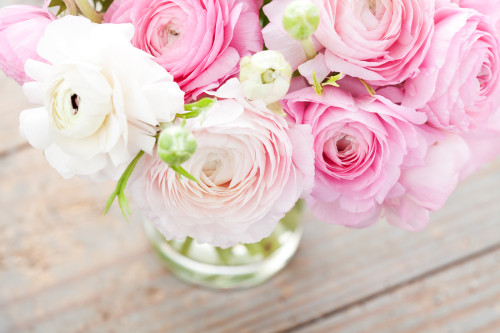












 Start a discussion ...
Start a discussion ...